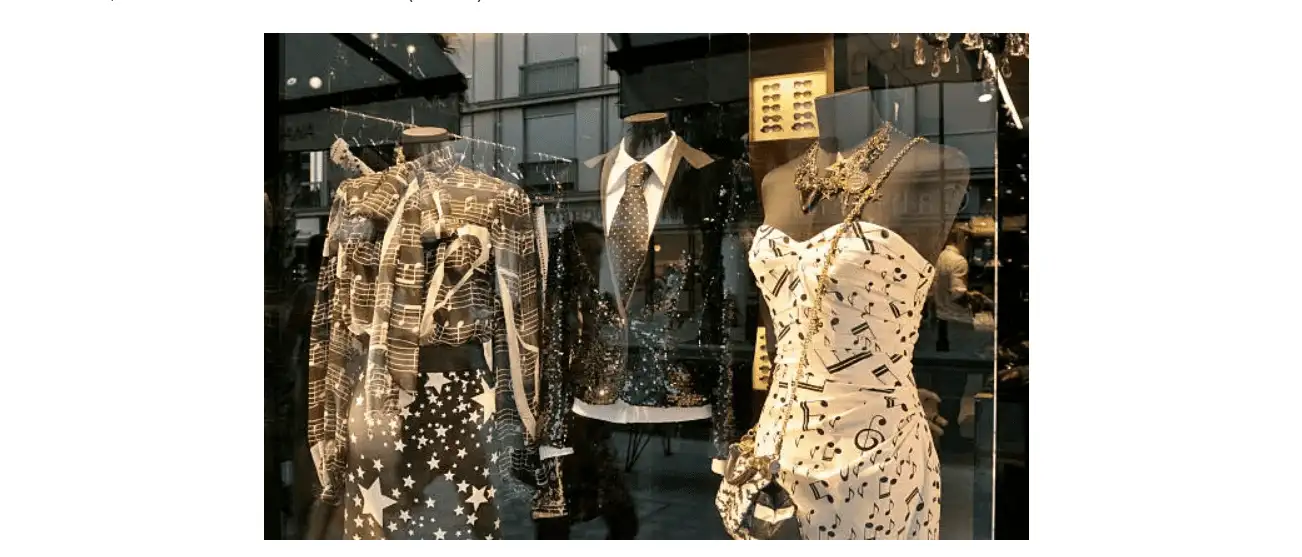The article “Blockchain Technology in Fashion I.: Web3, impact, NFTs and partnerships.” is more about the technology behind the fashion. As we all know blockchain is behind Bitcoin and cryptocurrencies, but how should we know that these technologies are behind supply chain systems too?
I have written this article to enlighten all of us and show how blockchain related to supply chain systems.
If you understand the concept then you realize soon almost every kind of material and products from raw to final state can be tracked end-to-end in that way not just fashion products.
However, this is a good example to understand the process.
Web3 and blockchain impact on fashion industry
Blockchain is a distributed ledger technology that can be used to create decentralized and secure digital records.
Web3 relies on blockchain technology to provide a decentralized infrastructure for applications, allowing for peer-to-peer interactions without the need for intermediaries. Web3 and blockchain technology are revolutionizing our online experiences by
- enabling decentralized and
- secure applications that offer unprecedented possibilities.
So the question is how blockchain technology in fashion transforming the whole industry?
Several ways and we would not even think some of the way how it change, so here are some ideas…
Supply chain transparency
Blockchain technology allows for transparency and traceability in the supply chain.
What does this mean and why should we know about this?
Firstly, his means that consumers
- can trace the entire lifecycle of a product, from the source of raw materials to the manufacturing process and final delivery.
This helps to ensure that products are ethically sourced and produced, which is an important consideration for many fashion consumers.
Sounds cool, but how does this work exactly?
Secondly, it means that the use of digital records that are
- created and
- stored on the blockchain.
Let’s explain with Winnie the Pooh
Each product assigned to a unique digital identity or “token” that is recorded on the blockchain.
The token includes information about the product, such as
- the source of the raw materials,
- the manufacturing process, and
- the final delivery destination.
Each time the product changes hands in the supply chain, a new transaction is recorded on the blockchain. It is a bit like You or Winnie the Pooh are meeting with someone then shaking hands, exchange honey or a book you pay and he gave you the item and say a nice goodbye.

As a matter of fact on the blockchain this means the product/item left the other person and arrived to you, that means a transaction created. The only difference you will not eat as you need to give to the next person, which action will create another transaction. 🙂
Each time the product changes hands in the supply chain, a new transaction is recorded on the blockchain.
The transaction on the blockchain includes information about
- the current owner of the product and
- its location in the supply chain.
Consumers can access this digital record of the product by
- scanning a QR code or
- other identifier on the product itself.
This allows them to view the entire history of the product also, from the source of the raw materials to the final delivery.
Why blockchain is better than traditional systems?
1. Security
Blockchain technology is based on cryptographic algorithms that make it highly secure and resistant to tampering or hacking.
2. Transparency
It provides a transparent and immutable record of every transaction, making it easy to track the movement of assets through the supply chain. Increases accountability, reduces risk of fraud and unethical practices.
3. Efficiency
It automates many of the processes involved in tracking assets through the supply chain, reducing the need for manual record-keeping and data entry. Increases efficiency, reduces the risk of errors and delays.
4. Cost-effective
By eliminating the need for intermediaries such as
- banks or
- brokers,
blockchain technology in fashion too can reduce transaction costs and increase the speed of transactions.
5. Trust
It creates a high degree of trust between parties by providing a secure and transparent record of every transaction. This helps to build trust between companies and consumers. Improve sustainability and ethical standards of various industries.
The process ensures products are ethically produced, which is important for many fashion consumers.
With blockchain technology, companies can track the movement of goods through the supply chain in real-time, allowing for quicker identification of any issues or delays.
Advantages over traditional methods
Additionally, blockchain technology in fashion offers several advantages over traditional methods of storing and sharing data.
By providing consumers access to this information, blockchain technology creates greater transparency and accountability in the supply chain. Consumers make more informed decisions about the products they purchase and can be assured that the products they buy are ethically sourced and produced.
Authenticity verification
Counterfeit products are a significant problem in the fashion industry.
Blockchain technology can verify the authenticity of products by creating a digital record of each item also.
This help to
- prevent the sale of fake products
- and protect consumers from fraud.
Decentralized marketplaces
Web3 technology allows the creation of decentralized marketplaces, which operate without the need for intermediaries.
Moreover, this help to reduce costs for buyers and sellers, and provide greater control over pricing and distribution.
NFTs and digital fashion
NFTs (non-fungible tokens) and digital fashion are two areas where blockchain technology is making a significant impact on the fashion industry.
What are NFTs?
Non-fungible tokens (NFTs) are a type of unique digital assets that are stored on a blockchain.
They allow creators to
- verify ownership of their digital creations and
- sell them as one-of-a-kind items.
In the context of fashion, NFTs are being used to create unique and exclusive digital fashion items, such as virtual sneakers and dresses, that can be bought and sold on blockchain-based marketplaces.
Digital fashion
Refers to
- clothing and
- accessories,
that are designed to be worn in virtual environments, such as
- video games and
- social media platforms.
These items are often created using 3D modeling software and can be sold and traded in the same way as physical fashion items.
Together, NFTs and digital fashion are creating new opportunities for designers, artists, and consumers in the fashion industry. They are also challenging traditional notions of ownership and value in fashion, as digital items become increasingly valuable and sought-after.
In addition to this they can be used to represent ownership of digital content just like it can ownership of the art pieces, including virtual fashion items such as
- clothing and
- accessories.
This opens up new opportunities for fashion designers and consumers, allowing for the creation and trade of unique, one-of-a-kind digital fashion items.
The value of NFTs
Why these items have value at all in the fashion industry?
Exclusivity
Fashion brands create limited-edition digital items, such as
- virtual clothing,
- accessories, and
- artwork, that can be purchased by collectors and fans.
Authenticity
Furthermore, it can be used to verify the ownership of digital assets, which is important in a world where digital content can be easily duplicated and shared. This increase the value of the digital item and make it more desirable to collectors.
Creative Expression
Allow fashion designers and artists to experiment with new forms of creative expression in the digital realm, such as creating
- virtual fashion shows,
- digital artwork, and even
- virtual clothing that can be worn by avatars in virtual worlds.
By creating unique and innovative digital content, designers and artists can attract collectors and drive up the price of their NFTs.
Investment
NFTs seen as investment opportunities for collectors and investors. The value of NFTs can appreciate over time. If more collectors and fans enter the market for NFTs, the demand for unique and exclusive digital assets drive up their value.
Expensive NFTs in Fashion
Dolce & Gabanna
Dolce & Gabanna – the Italian luxury fashion house founded in 1985 in Legnano by Italian designers Domenico Dolce and Stefano Gabbana – sold a 9 pieces fashion NFT alongside with some physical couture items for 5.7 million dollar in October 2021.
This caused that the price of the Ethereum went up and the sold price of the NFT collection reached 6 million dollar.
The brand displayed and auctioned its digital ‘Collezione Genesi’’ collection on the digital luxury marketplace UNXD, according to The New York Times. The collection, made up of five physical designs and four digital creations, was a collaboration with UNXD. (Source)

Gucci and Louis Vuitton
Luxury fashion brands such as Gucci and Louis Vuitton also entered the NFT market, offering digital products such as virtual sneakers and handbags. These NFTs can be used in online games and virtual worlds or collected as rare digital items.
They have primarily sold their NFTs through online auction platforms, such as
- Christie’s and
- Sotheby’s.
They also partnered with other digital marketplaces and platforms to offer their NFTs directly to consumers.
Specific platforms used for the sale of their NFTs vary depending on the product and marketing strategy.
Blockchain technology in fashion
VeChain
A blockchain platform provides supply chain management solutions for various industries, including fashion. It uses RFID (radio frequency identification) technology to track products throughout the supply chain, with each product assigned a unique digital identity on the blockchain.
Furthermore, this allows transparency and traceability of each product, from the sourcing of raw materials to the final delivery.
H&M
In 2020, H&M partnered with VeChain to
- track the sourcing and
- production of sustainable cotton used in its clothing.
This allows customers to trace the journey of the cotton from farm to finished product.
Adidas
Moreover, in 2019, Adidas partnered with blockchain company VeChain to create a pilot project that uses blockchain technology to track the movement of products throughout the supply chain. This allows Adidas to ensure that its products are ethically sourced and produced.
Provenance
A blockchain-based platform allows brands to track the entire lifecycle of a product, from the source of raw materials to the manufacturing process and final delivery. It uses blockchain technology to
- create a digital record of each transaction,
- providing transparency and accountability in the supply chain.
Stella McCartney and Bolt Threads
In 2019, Stella McCartney launched a pilot project with blockchain company Bolt Threads to create a range of vegan silk made from lab-grown materials. The technology was used to ensure transparency and traceability in the supply chain.
Loomia
A company uses blockchain technology in fashion to
- track the movement of textiles and garments through the supply chain.
Additionally iit creates a digital ledger of each product, from the sourcing of materials to the manufacturing process and shipping, allowing for transparency and traceability of each product.
Fashion Coin
A cryptocurrency designed specifically for the fashion industry.
It is used to facilitate transactions between fashion brands and suppliers with each transaction recorded on a blockchain.
Everledger and Burberry
In 2018, Burberry announced a partnership with blockchain company Everledger to track the authenticity and provenance of its products. Allowed customers to verify the authenticity of their Burberry items and provides transparency in the supply chain.
